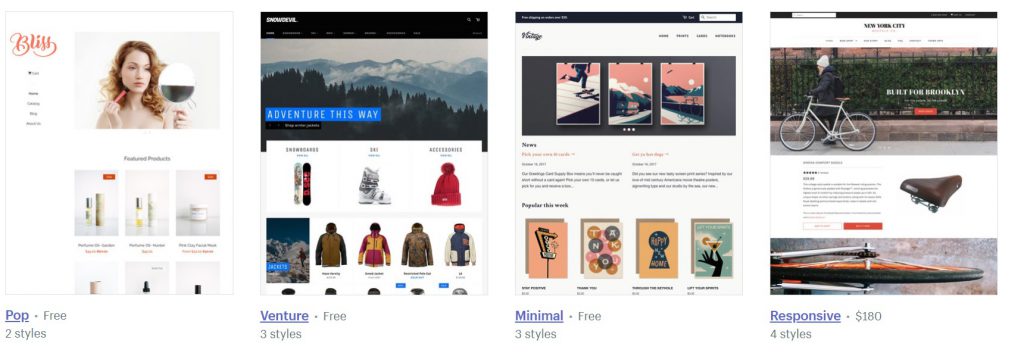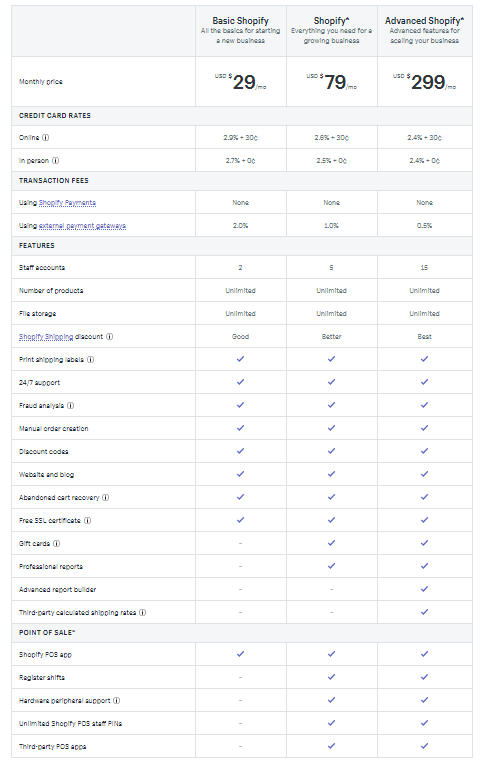Shopify is one of the most popular eCommerce platforms to choose from. If you’re leaning towards joining Shopify’s other over 600,000 store owners, but are still not sure, this Pros and Cons of Using Shopify post is for you. Choosing the right eCommerce platform can make or break your online business before you’ve even started. It is also a decision that even the biggest eCommerce success stories have backtracked on, even after they’re pulling 7 figures.
Here’s a quick guide to all the pros and cons of using Shopify to help you make your eCommerce platform decision today!
1. Ease of Use
The first question you should be asking yourself when you choose an eCommerce platform, especially if you are bootstrapping, is, How easy will it be for you to manage?
Pro: Simplicity
Shopify is one of the most user-friendly eCommerce platform choices out there, making it a top choice for newbies or established stores wanting to cut down to a lean operation. It is designed to be simple to use while taking care of the store’s tech needs, so you don’t have to. Meaning that even the most tech-challenged of us can get an eCommerce business online.
Con: Unique Customization Costs
Like with any customization, if you’re looking to design something very specific that needs a lot of customization, you will need a budget to hire experts and/or agencies. This wouldn’t be ideal for new store owners.
2. Storefront Themes and Design
You will also want to look at the design options within the platform to ensure that your storefront theme and design match your brand and appeal to your target audience.
Pro: Theme Variety
One of the biggest advantages of using Shopify is access to hundreds of storefront themes that have been designed for eCommerce and the Shopify platform specifically. Unlike with WordPress, every Shopify theme is designed for the eCommerce sector, providing a variety of options in a variety of niches to help you retain customers.
Con: Limited Free Themes
One disadvantage of using Shopify themes is that there is a big chance you will have to buy a theme as there are currently only 10 free Shopify theme templates available. Paid themes, a little more expensive than the average WordPress theme, will cost you up to $180.
3. Built-in Marketing Tools
A popular question we get when people are choosing between Shopify, WooCommerce or Magento Shopify, is what the basic version of the platform allows in terms of marketing tools such as SEO, automation, discounts and selling on social media – to name a few.
Pro: Built-in Tools
Shopify comes with a variety of built-in functionality and marketing tools such as the ability to integrate with social media, generate discount codes, implement SEO practices and create an eCommerce blog for your content marketing strategy.
Con: Additional Functionality Apps May Need to Be Added
You will need to increase functionality for built-in tools by using apps or upgrading your Shopify plan. For example, yes, you can generate discount codes in the starter Shopify plan, but if you want to allow your customers to be able to use more than one discount per order, you will need to upgrade to Shopify Plus.
4. Functionality and App Store
Another big deciding factor should be the standard functionality of the platform and added functionality options. In other words: apps.
Pro: An App for Every Function
One of Shopify’s biggest strengths is its app variety. Currently, it has over 1,200 apps in their app store to help you do anything from automation and accounting to boosting traffic. All designed to help you increase sales, improve functionality and scale your online business. However, let’s not discount the functionality that Shopify provides built into their platform that doesn’t require any additional apps. Such as:
- Multiple staff login options
- Discount code engine
- Inventory management
- Easy product image and description loading
- Easy product category optimization
- Customer order tracking
- Payment gateways
- Customer account setup
- In-depth customer metrics
Con: Apps Aren’t Free
There are around 500 free apps on Shopify, but most of them come with premium plans that will cost money. Which brings us to Shopify pricing pros and cons…
5. Pricing
Cost is an essential factor to consider when choosing your eCommerce platform. Not only the cost of the platform and apps, but also the cost of maintaining or customizing that platform.
Pro: Don’t Need to Fork Out Huge Budgets to Manage
Shopify can seem expensive when you compare it to, say, WordPress. However, the beauty of Shopify’s ease of use is that new, budget-strapped online store owners don’t have to fork out huge budgets for experts, which would cost far more than their subscriptions. Plus, with the basic plan of just $29 per month, you don’t need to tie yourself to long hosting plans as you would with other platforms. But the most significant advantage of their pricing is that they are very clear about costs, and you can plan ahead without any surprises.
Con: Advanced Plans Too Pricey For Beginners
Stores doing over $10k per month aren’t too bothered by the accumulated fees; however, advanced plans and Shopify Plus can seem very expensive for a new store owner.
6. Platform Support
Lastly, when deciding whether or not to choose Shopify, it is crucial to consider the type of customer support you will be getting.
Pro: Great 24/7 Support
Shopify offers all plans 24/7 support access through email, live chat and phone (depending on your region).
Con: Tech Support Number Only in Select Countries
If you want to call, you can only do so to one of these four regions: US, UK, New Zealand and Australia. Additionally, for some tech issues such as with bought templates, you will need to contact developers directly through online forums – depending on each vendor’s support policy.
—
There you have it, the top pros and cons of using Shopify. If you’re still deciding on an eCommerce platform, click through to our full guide: Shopify, WooCommerce or Magento – which do you choose?
If you’re ready to start with Shopify, open your store now!

Nicole is a content writer with over sixteen years experience and flair for storytelling. She runs on a healthy dose of caffeine and enthusiasm. When she's not researching the next content trend or creating business content strategies, she's an avid beachgoer, coffee shop junkie and hangs out on LinkedIn.
Recommended articles
 Facebook Ads for eCommerce: 16 Strategies, Examples & Tips
Facebook Ads for eCommerce: 16 Strategies, Examples & Tips
 How to Build a Winning eCommerce Ads Strategy
How to Build a Winning eCommerce Ads Strategy
 Google Ads for eCommerce: Everything You Need to Know
Google Ads for eCommerce: Everything You Need to Know
 10X Your Traffic with PPC Management Software
10X Your Traffic with PPC Management Software
Comments
Powered by Facebook Comments




